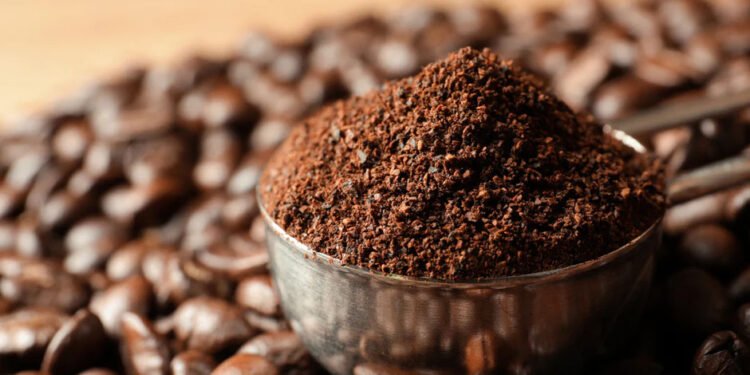Coffee, often hailed as the elixir of productivity and a source of immense pleasure, is a drink that has captivated the world for centuries. Its flavour, aroma, and complexity are the subjects of fascination for coffee aficionados and scientists alike. But what makes one cup of coffee vastly different from another? This article will dive into the variables that contribute to the diverse and delightful flavours found in every cup, especially when enthusiasts seek the utmost quality, like the best coffee beans in 1kg, to elevate their coffee experience.
The Coffee Species: Arabica vs. Robusta
The journey of flavour begins with the coffee species itself. The two primary species cultivated for coffee production are Arabica (Coffea arabica) and Robusta (Coffea canephora). These two species have distinct characteristics that significantly affect the coffee’s flavour profile.
- Arabica Coffee: Known for its nuanced and complex flavours, Arabica beans are often considered superior in specialty coffee. They are grown at higher altitudes, which results in slower maturation and a concentration of sugars, acids, and aromatic compounds.
- Robusta Coffee: Robusta beans, on the other hand, are grown at lower altitudes and are hardier than Arabica plants. Robusta coffee is characterised by its strong, bitter taste and earthy or woody notes.
Terroir: The Influence of Geography
Much like wine, coffee has its version of terroir – the unique environmental conditions in which it is grown. The geography of the coffee-producing region plays a pivotal role in shaping the flavour of the beans. Here are some key terroir factors:
- Altitude: The altitude at which coffee is grown impacts its flavour profile. Higher altitudes often result in slower maturation, leading to a denser bean with a greater concentration of sugars. This can produce coffees with brighter acidity and more complex flavours.
- Climate: The climate of the region affects the length and quality of the coffee bean’s development. Consistent temperatures, rainfall, and seasonal variations contribute to the unique flavours of the coffee.
- Soil: The soil composition in which coffee plants are cultivated can influence their mineral content and, subsequently, their flavour. Volcanic soils, for example, are known to impart distinct characteristics to coffee.
Processing Methods: A Delicate Art
After harvesting, coffee cherries must undergo processing to extract the beans. The method used during this crucial phase can drastically alter the final flavour of the coffee. Two primary processing methods are washed (wet) and natural (dry).
Washed Process: In the washed process, the outer pulp of the coffee cherry is removed before fermentation. This method often produces cleaner and brighter flavours with a pronounced acidity. It allows the unique characteristics of the coffee bean to shine through.
Natural Process: In the natural process, the whole cherry is dried with the bean inside. This method can produce coffee with a more fruity and wine-like character, as the sugars from the cherry skin are absorbed by the bean during drying.
Roasting: From Green to Brown
Roasting is where the magic happens. Green coffee beans undergo a transformation, turning into fragrant brown beans that are grinded and brewed. The roasting process is a delicate balance between time and temperature, profoundly impacting the coffee’s flavour.
Roasting Time: The duration of roasting determines the flavour profile. Shorter roasting times preserve more of the bean’s natural characteristics, resulting in a lighter roast with brighter acidity and floral notes. Longer roasting times produce a darker roast with bolder, often smoky, flavours.
Roasting Temperature: The temperature at which coffee beans are roasted can also influence their flavour. Higher temperatures can produce more bitter and roasted notes, while lower temperatures might preserve more delicate flavours.
The Art of Blending
Blending is a craft that allows roasters to create unique and consistent flavour profiles by combining beans from different regions, species, or processing methods. The goal of blending is to achieve a harmonious balance of flavours that can be replicated with each batch. Whether crafting your blend at home or seeking out the best coffee beans in 1kg from a trusted roastery, blending offers a tantalising world of taste exploration. Blends can cater to a wider range of preferences, making them an exciting option for coffee connoisseurs.
Brewing Method: The Final Act
The brewing method also plays a vital role in the flavour extraction process. Different brewing methods, such as pour-over, French press, espresso, and cold brew, highlight various aspects of the coffee’s flavour. Adjusting variables like grind size, water temperature, and brew time can further tailor the taste to your liking.
In conclusion, the flavour of coffee is the result of a symphony of factors, from the coffee species and terroir to processing methods, roasting, blending, and brewing. Each step along the way offers an opportunity to accentuate or transform the flavour profile of the beans. As a coffee enthusiast, understanding these factors allows you to appreciate the complexity and diversity of the world of coffee. So, the next time you savour a cup of your favourite brew, take a moment to ponder the intricate dance of elements that have come together to create that delightful flavour in your mug.












